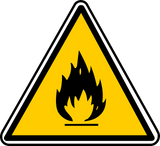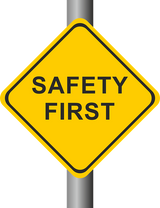What Are Work-Related Upper Limb Disorders (ULDs)?
Upper-limb disorders (ULDs) are common among workers. Research shows that nearly one-third of all work-related injuries consist of musculoskeletal disorders (MSDs). While there are different types of MSDs, ULDs are among the most common. Millions of workers develop ULDs that, if left untreated, can progress into more serious and painful conditions. What are work-related ULDs exactly?
Overview of ULDs
As the name suggests, ULDs are disorders that affect the upper limbs. They are classified as MSDs, and like all MSDs, they involve muscle, cartilage, tendons and nerves. The difference is that ULDs only affect the upper limbs, whereas other MSDs may affect the back, lower limbs or other parts of the body.
Common Types of ULDs
Carpal tunnel syndrome is a common ULD. Workers who type, write or otherwise use their hands for long periods may develop it. Carpal tunnel syndrome occurs when pressure is placed on the median nerve of a worker's hand. The soft tissue in a worker's hand may become inflamed to the point where pressure is placed on the median nerve, resulting in carpal tunnel syndrome.
Hand-arm vibration syndrome is another common ULD from which workers suffer. Hand-arm vibration syndrome occurs when a worker's hand and/or arm is exposed to severe vibrations -- typically for an extended period. While it can manifest in different ways, numbness is a telltale symptom of this ULD. Hand-arm vibration syndrome can cause numbness in the affected hand or hands.
How to Prevent ULDs in the Workplace
ULD prevention begins with ergonomics. Like with all MSDs, poor ergonomics is a risk factor for ULDs. If your workplace isn't ergonomically designed, it may place you and other workers at risk for ULDs.
Ergonomics is the process of designing a workplace to meet the needs of its workers. Just because a tool or piece of equipment is functional, it may or may not be ergonomically designed. A chair, for instance, may offer a padded seat in which to sit. But for an ergonomic design, it needs to feature a back rest that will support your lumbar region. The bottom line is that you need to embrace ergonomics in your workplace to protect against MSDs, including ULDs.
Taking breaks can lower your risk of ULDs. Carpal tunnel syndrome, hand-arm vibration syndrome and other ULDs are often associated with overuse injuries. They are more likely to occur when you perform the same task over and over. By taking breaks, you'll give the tissues in your upper body a chance to rest.
Recent Posts
-
Fire Safety in the Workplace: What You Need to Know
What steps are you taking to prevent fires in your workplace? According to the U.S. Occupational Saf …Aug 23rd 2023 -
Is It Safe to Go Jogging With a Cold Infection?
If you're suffering from a cold infection, you might be wondering whether it's safe to go jogging. T …Aug 22nd 2023 -
5 Safety Tips to Follow When Using a Powder-Actuated Tool
Powder-actuated tools are commonly used to join materials to steel and concrete. Also known as Hilti …Aug 20th 2023




